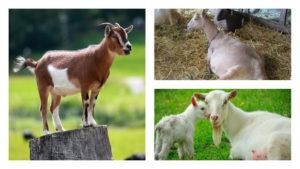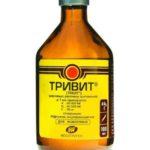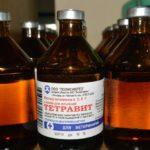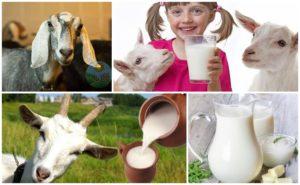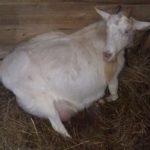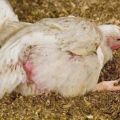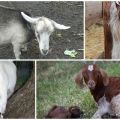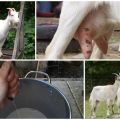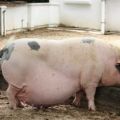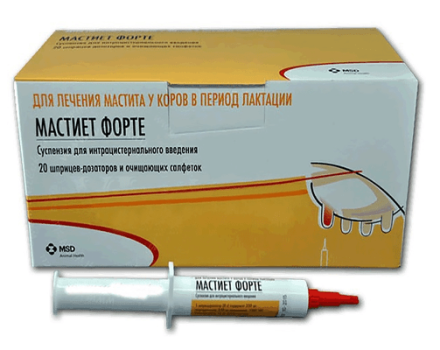Causes and symptoms of postpartum paresis in a goat, treatment and prevention
Paresis is a complex pathology of pregnant women and those who have given birth. Its appearance is due to violation of the rules of animal feeding. To avoid the development of pathology, you must follow the doctor's recommendations. If a goat develops paresis, symptoms and treatment should be reviewed by a veterinarian. If you do not immediately help the animal, there is a high probability of its death.
Causes of paresis in goats
The reason for the appearance of paresis after childbirth is a decrease in the volume of calcium in the blood. This substance provides muscle contractions. With a lack of it, trembling in the legs, relaxation or convulsions occur. The appearance of pathology causes an imbalance in hormones, which lead to problems with calcium absorption.
During pregnancy, the female is not deficient in the mineral. She can get calcium from her feed. However, milk production requires large amounts of macronutrients. Hormones normally release calcium from the bones. With the development of pathology, problems arise. As a consequence, calcium enters the milk, and there is not enough calcium to meet the needs of the female.
Common factors that cause metabolic problems include:
- excess weight in the female;
- lack of physical activity;
- rumen acidosis.
Signs of the disease
With the development of pathology after lambing, the animal begins to move poorly. Then he shivers. The goat has difficulty getting up and does not eat. As the pathology progresses, the animal does not get up, although it tries. At the final stage of the disease, the animal lies motionless. In this case, the head is extended forward and the eyes are closed.
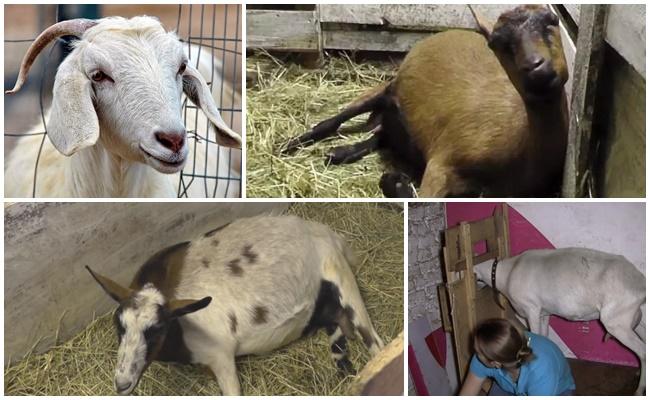
At the final stage, paralysis of the limbs and organs rapidly develops - first of all, the pharynx and intestines. If you do not provide the animal with the right help in a timely manner, it dies of paralysis of the heart and respiratory organs. This occurs 1-2 days after the onset of symptoms. Therefore, it is so important to immediately call the veterinarian.
Features of the treatment of the disease
You need to treat the disease with the help of a doctor. This must be done in the following ways:
- postpartum administration of caffeine or another substance that will help support heart function;
- use of "Tetravit" or "Trivita";
- wrapping the animal.
The veterinarian should give a calcium chloride glucose infusion. At the stage of removing the needle, the condition of the pet may improve. With proper therapy, the goat rises and begins to eat after a quarter of an hour.
The doctor should check the condition of the animal and wait for it to rise.If no improvement is achieved within 30 minutes, you need to blow air into the nipples. With this effect, the impulse enters the brain, which helps to cope with the signs of paresis.
Further therapy consists of repeated administration of intravenous glucose. The animal also needs calcium chloride infusions. After that, the specialist prescribes the introduction of borgluconate intramuscularly. Calcium gluconate can also be used.
Instead of intravenous glucose injections, it is permissible to use 200-300 grams of sugar. A therapeutic diet, which should include hay and twigs, is also important.
The use of concentrates should be discussed with your veterinarian. You need to start giving such funds in small portions. They should be gradually increased. Thanks to this, the microflora of the rumen will have time to adapt to the new diet.
Potential danger
If the prenatal and birth paresis is not treated, the animal dies within 1-3 days from the moment the pathology develops. With timely assistance, the prognosis is favorable. After a few hours, the goat gets up and starts eating.
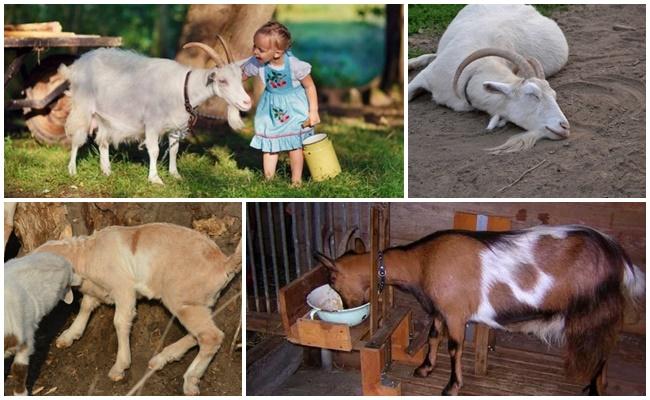
Prevention
To avoid the appearance of maternity paresis, it is worth adhering to the basic rules of prevention:
- make the launch on time;
- feed the goat correctly before lambing;
- provide her with proper nutrition after childbirth.
2-2.5 months before giving birth, you should stop milking the animal. The launch is carried out smoothly - from 3 months of pregnancy. First, you need to reduce the amount of succulent feed and concentrates. In case of a strong decrease in the amount of milk, it is recommended to reduce the number of milkings. In this case, the goat should be transferred to hay and branches. Giving her treats during this period is prohibited.
The goat's need for food before lambing is minimal. After the birth of kids, it increases significantly. To avoid problems, it is important not to make frequent mistakes. It is believed that concentrates should be removed from the goat's diet. This is true during the launch period and a certain time after it.
In this case, hypoglycemia is considered one of the causes of milk fever. It appears when there is insufficient production of a monosaccharide. In addition, it is important to achieve a smooth restructuring of microflora for lactation. Otherwise, there is a risk of developing ketosis, which can also provoke paresis.
Many budding farmers mistakenly believe that goats require calcium supplements during pregnancy. A slight mineral deficiency is required to prepare for lactation. Thanks to this, it will be possible to start the process of its extraction from bone structures. During lactation with a high milk yield, products containing calcium and phosphorus are required.
For a week after giving birth, the goat needs to provide a gentle diet. It should be dominated by hay and bran. The female spends a lot of fat on milk production, which leads to weight loss. Therefore, she needs to be given starch concentrates and calcium.
The appearance of postpartum paresis is considered a very dangerous pathology that can lead to the death of the animal. In order to prevent the appearance of such problems, it is necessary to consult a veterinarian in a timely manner and strictly follow his recommendations.
